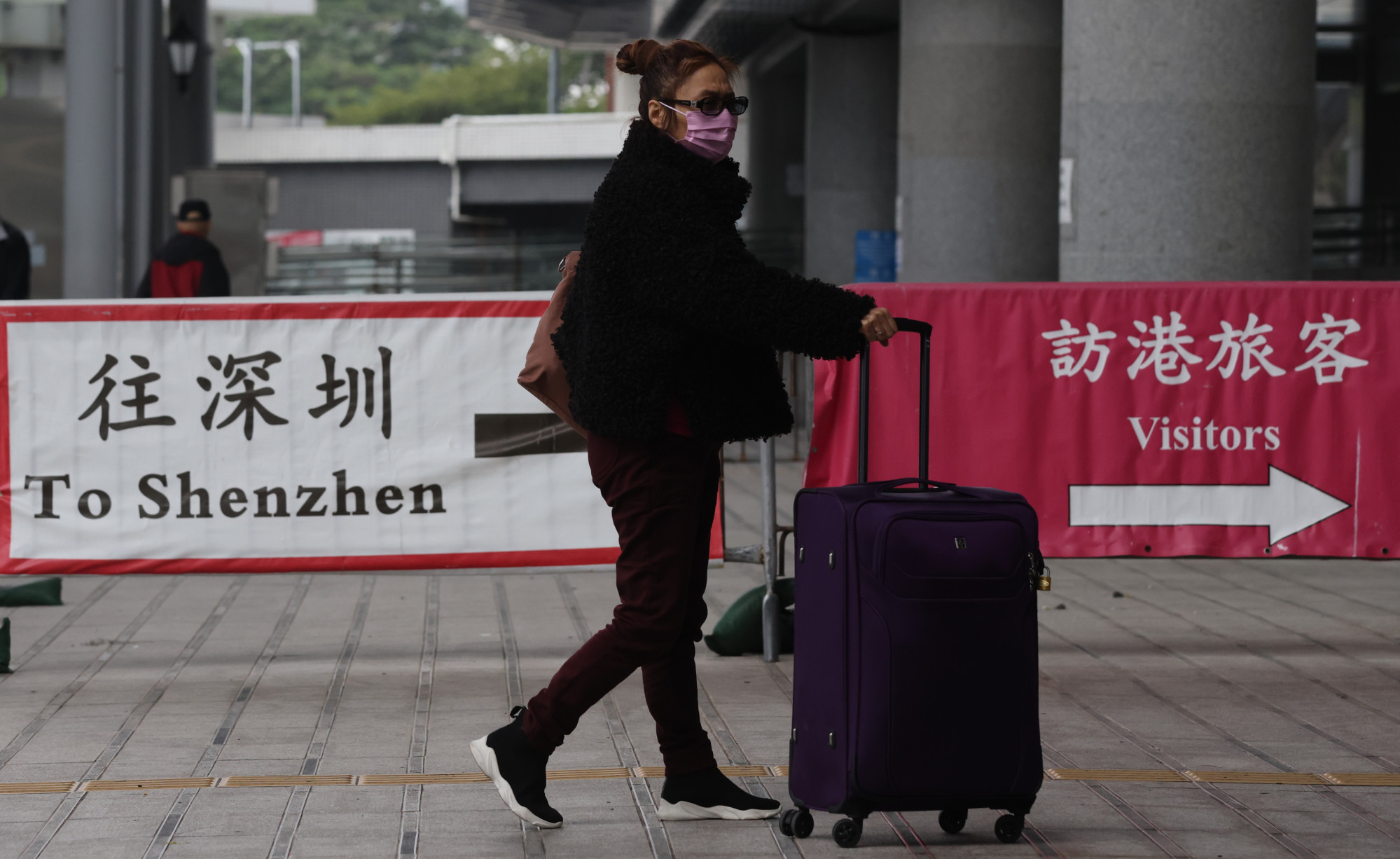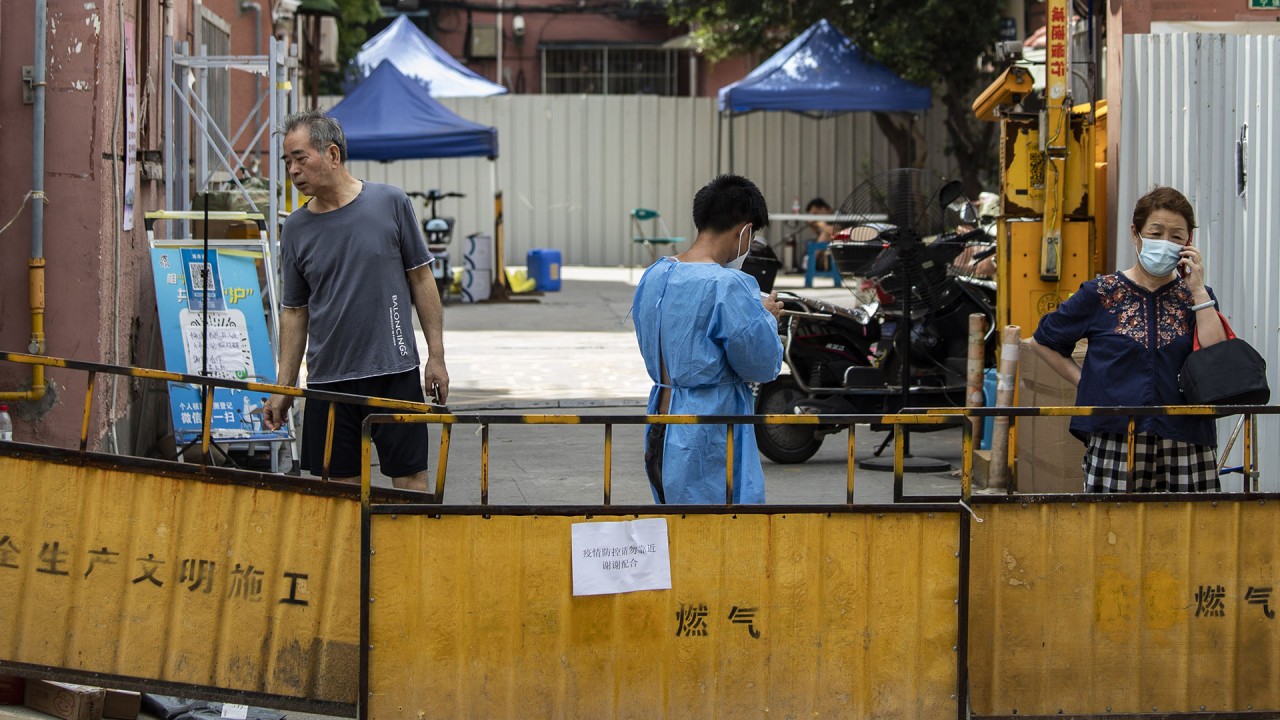
Coronavirus: Hong Kong logs over 3,000 cases as health authorities warn daily tally could double in two weeks
- Hong Kong on Thursday reports 3,028 Covid-19 cases, 172 of which were imported, and one virus-related death
- Health authorities warn daily figure could reach as many as 6,000 coronavirus cases in two weeks, cite recent infection trend
Hong Kong has recorded more than 3,000 new coronavirus cases, the highest daily figure since April 5, with health authorities expecting the tally to double to as many as 6,000 in the next two weeks.
The prediction of a surge in Covid-19 infections came as authorities revealed plans to allow more people to travel to mainland China through a special corridor to Shenzhen.
Health officials on Thursday reported 3,028 Covid-19 cases, 172 of which were imported, and one virus-related death.
The city’s overall coronavirus tally currently stands at 1,261,868 cases, with 9,407 fatalities.
“The number of infections shows an upward trend, which may double in the next one to two weeks to reach a high level,” said Dr Chuang Shuk-kwan, head of the communicable disease branch of the Centre for Health Protection.
“Based on the previous trends of the past weeks, the daily number may reach 6,000 in the next two weeks, which may put pressure on our medical services.”
Hong Kong to suspend flight ban mechanism from Thursday
Health authorities also uncovered 42 suspected cases of the BA.2.12.1 coronavirus strain, in addition to 17 infections potentially involving the BA.4 and BA.5 subvariants.
Chuang said the number of BA.4 and BA.5 cases was rising, with the data from the World Health Organization (WHO) showing that the latter, which had been reported in 83 countries, was replacing other strains across the world.
The proportion of BA.5 cases among all infections involving subvariants globally rose from 37 per cent last week to 52 per cent, Chuang said, while those featuring BA.4 increased slightly from 11 per cent to 12 per cent during the same period.
Citing the data from the WHO, she also said the number of reported cases involving the BA.2 and BA.2.12.1 strains was on a downward trend, falling from 16 per cent to 9 per cent, and 19 per cent to 11 per cent, respectively.
Chuang added that the proportion of BA.4 and BA.5 cases now accounted for nearly 1 per cent of Hong Kong’s overall daily infections.
“We will closely monitor Hong Kong’s situation to see if it will be similar to the situation overseas,” she added.
Health officials also revealed that King Fuk Care Home, a centre for elderly residents, had recorded three coronavirus infections, comprising two residents and one employee, while a facility for the disabled, Hong Chi Oi Tung Hostel, reported that a resident had contracted Covid-19.
A total of 201 cases, involving 163 students and 38 staff members, were uncovered at 180 schools, with two campuses asked to suspend individual classes for a week after they reported outbreaks.
But respiratory medicine specialist Dr Leung Chi-chiu said the surge in daily infections during the two days could be the result of backlogged cases because of the effects of Typhoon Chaba on coronavirus testing over the past weekend.
Leung said he did not expect the daily tally to soar and potentially double in the next one to two weeks, noting that, as long as there were no large-scale local outbreaks of new Omicron subvariants, cases would remain at a stable four-digit figure.
“The infections may continue increasing, but at a slowing pace, before reaching a stabilised level in the next two to three weeks,” he said.
Return of mainland students boosts rents near Hong Kong’s universities
Authorities on Wednesday night revealed a special corridor that would open up more quarantine hotel slots for some travellers entering Shenzhen from Hong Kong, with targeted groups not subject to an earlier quota.
Eight new groups, including mainland students from overseas entering Shenzhen via Hong Kong, and seniors aged 70 or above, are now allowed to cross the border through a “care corridor”, without affecting the daily quota of 2,000 quarantine units for Hongkongers crossing the border.
It is still unclear how many hotel rooms have been set aside for the new pathway.
Mainland authorities also announced stepped-up efforts to refine the hotel booking system – such as a firewall limiting the frequency of clicks and number of users who log in with the same IP address – to deter scalpers who resell slots at a profit.
According to a source, Hong Kong’s new health minister Professor Lo Chung-mau is working with Shenzhen authorities on the latest arrangements.
“He is working step by step towards providing greater convenience for cross-border travel, even though quarantine-free travel cannot be immediately achieved,” the source said.

The other groups who can use the special corridor include children aged 14 or under without a guardian in Hong Kong; pregnant women and their companions; people with underlying or severe illnesses who are not suitable for centralised isolation; immediate family members of those who are in critical condition or who have died recently; people who need to attend court hearings and those who need to take important exams.
The mainland last week announced the biggest change to entry rules since it closed its borders in March 2020, cutting quarantine time for overseas arrivals, including those from Hong Kong, from 10 days to seven at a government-run centre. Arrivals will also undergo three days of home isolation instead of the previous seven days.
Amid the high demand for isolation spaces among overseas arrivals – notably students returning for the summer holiday – mainland authorities have increased the daily quota of 1,300 quarantine hotel rooms in Shenzhen to 2,000.
Lo earlier expressed hope that more families and couples separated by the city’s border with the mainland could be reunited for Chinese Valentine’s Day on August 4, provided the number of local Covid-19 infections could be reduced.
For overseas arrivals in Hong Kong, Lo is also said to be formulating options, including shortening the quarantine period, for John Lee Ka-chiu, the city’s leader, to consider.
Hong Kong ‘won’t return to toughest Covid rules for arrivals’: John Lee
The number of people a day who entered the mainland through the Shenzhen Bay control point over the past week ranged from 1,113 to 1,548, the Immigration Department said.
Legislator Bill Tang Ka-piu, of the Federation of Trade Unions, said setting up the corridor proved that mutual trust between the mainland and Hong Kong authorities existed. He added the mainland had always provided help to those with special needs, such as allowing people who were unsuitable for centralised isolation to quarantine at home.
“I would say this is a good sign … since mainland authorities have maintained such measures despite no downward trend in the daily infections in Hong Kong,” he said.
Allen Shi Lop-tak, president of the Chinese Manufacturers’ Association of Hong Kong, said the measure was more “reasonable and humanised”, adding that he hoped people with urgent business needs could also be included in the eight groups.
He also urged the government to allow quarantine-free business travel, provided participants were inoculated with at least three doses of Covid-19 vaccine, returned on the same day as they departed and adopted point-to-point travel.


